8 Easy Ways To Know When Your Watermelon Has Gone Bad
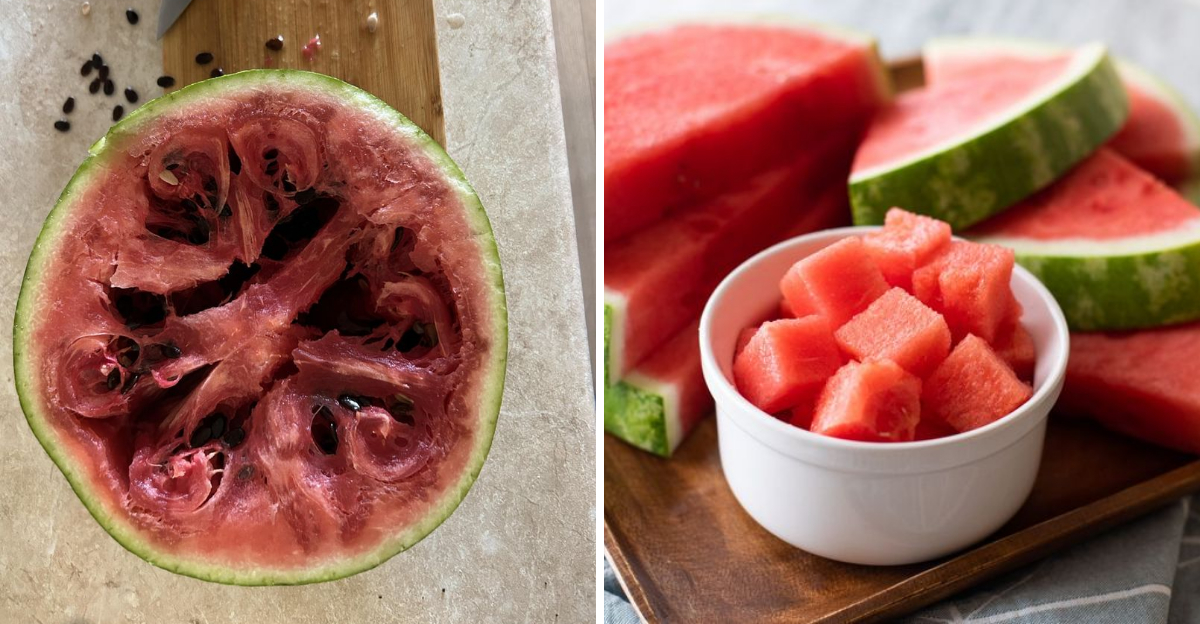
Watermelon is a refreshing and delicious fruit, perfect for hot summer days and picnics. However, like all fruits, it can spoil over time. Knowing how to identify a spoiled watermelon can save you from an unpleasant experience. In this guide, we’ll explore eight simple yet effective ways to determine if your watermelon has gone bad. From changes in smell to texture, these tips will help you ensure that every bite of watermelon is as sweet and juicy as it should be.
1. It Smells Sour or Funky
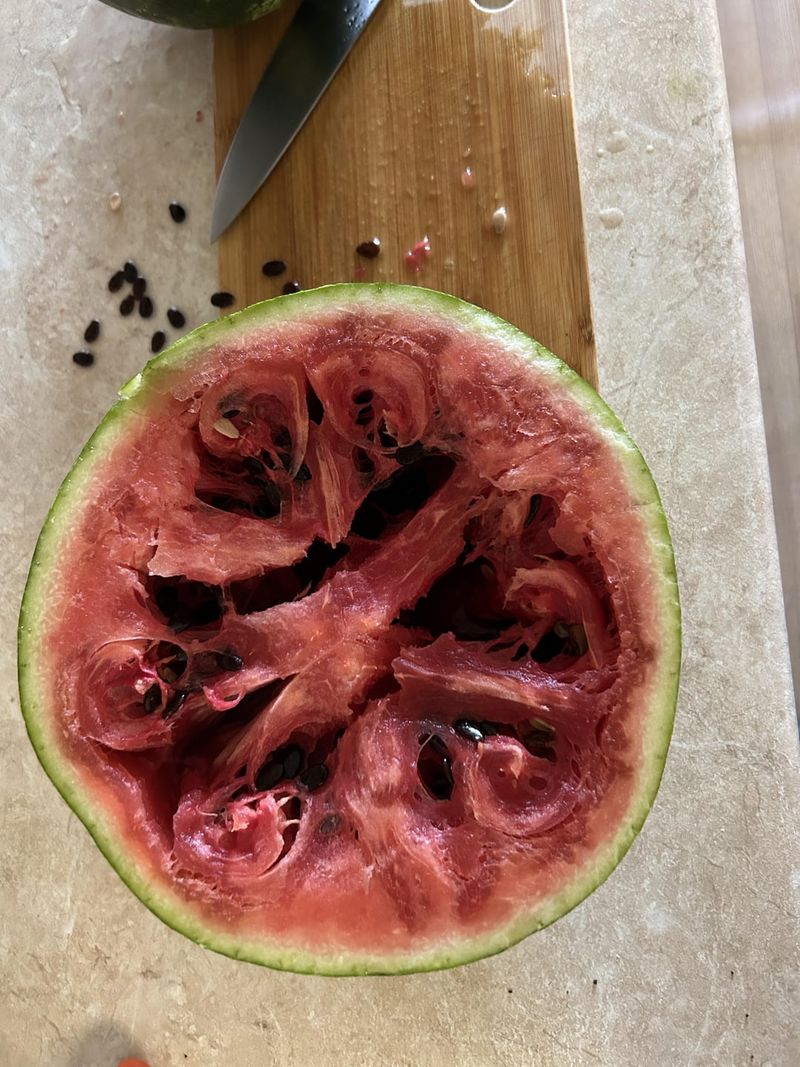
Imagine cutting into a watermelon expecting a sweet aroma, only to be greeted by a sour, almost fermented smell. That’s a clear signal that it’s time to toss it. A fresh watermelon emits a clean, sweet scent that delights the senses. This dramatic change in smell is a strong indicator of spoilage.
The sour smell develops as natural sugars ferment, turning your once-juicy fruit into something unpleasant. Be cautious, as this can happen quickly, especially in warm environments. When you notice this funky aroma, it’s best to err on the side of caution and discard the fruit.
2. The Flesh Is Slimy or Sticky
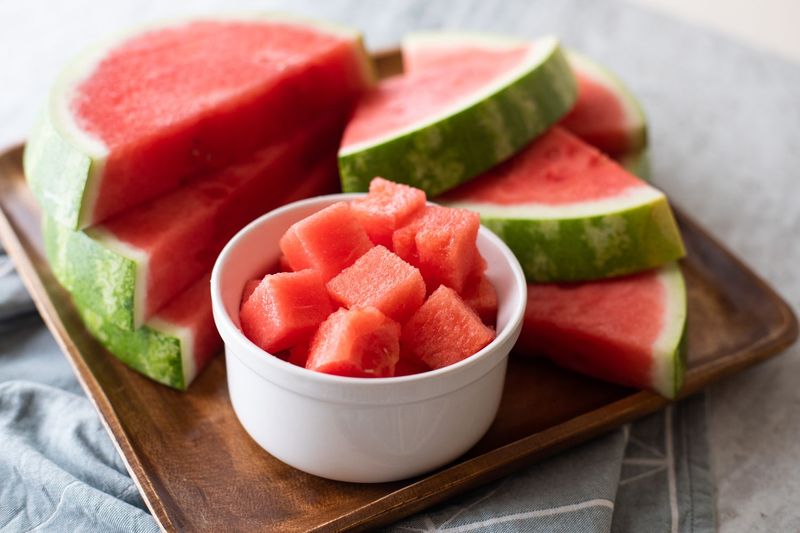
Picture yourself running your fingers over the flesh of a watermelon, expecting it to be crisp and refreshing. Instead, you find it slimy or sticky. This unsettling texture is a sign of spoilage.
As watermelon starts to go bad, its natural juices can ferment, creating a slippery surface. This is often accompanied by an off-putting odor, making the fruit unappetizing.
If you encounter this sticky scenario, it’s best to avoid eating it. The unpleasant sensation combined with an odd smell is a clear marker that your watermelon is past its prime.
3. There Are Dark or Moldy Spots
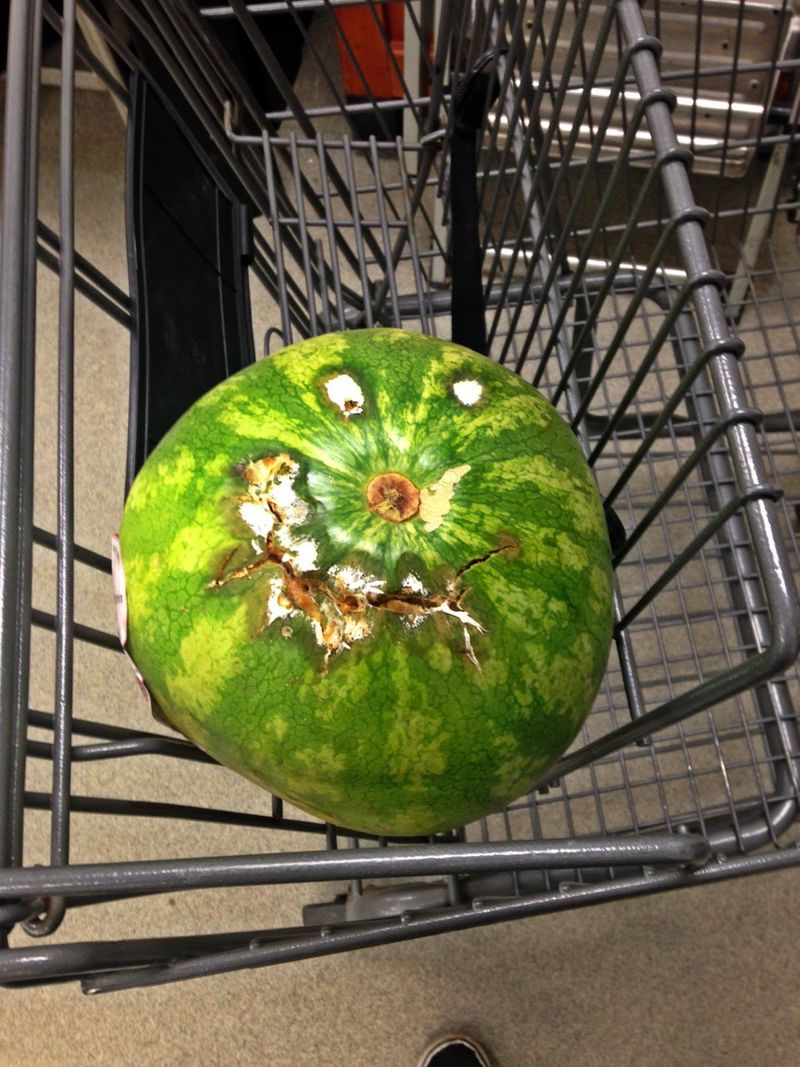
A mysterious moldy spot on your watermelon can be more than just an eyesore. Black, green, or fuzzy mold on the rind or flesh is a definite no-go. Mold can spread invisibly, contaminating the entire fruit.
Don’t be tempted to just cut away the affected areas. Mold’s microscopic tendrils can reach far beyond what the eye can see, potentially affecting your health.
Although the temptation might be to salvage the unspoiled sections, it’s safer to discard the entire piece. The presence of mold signifies irreversible spoilage.
4. The Color Looks Off
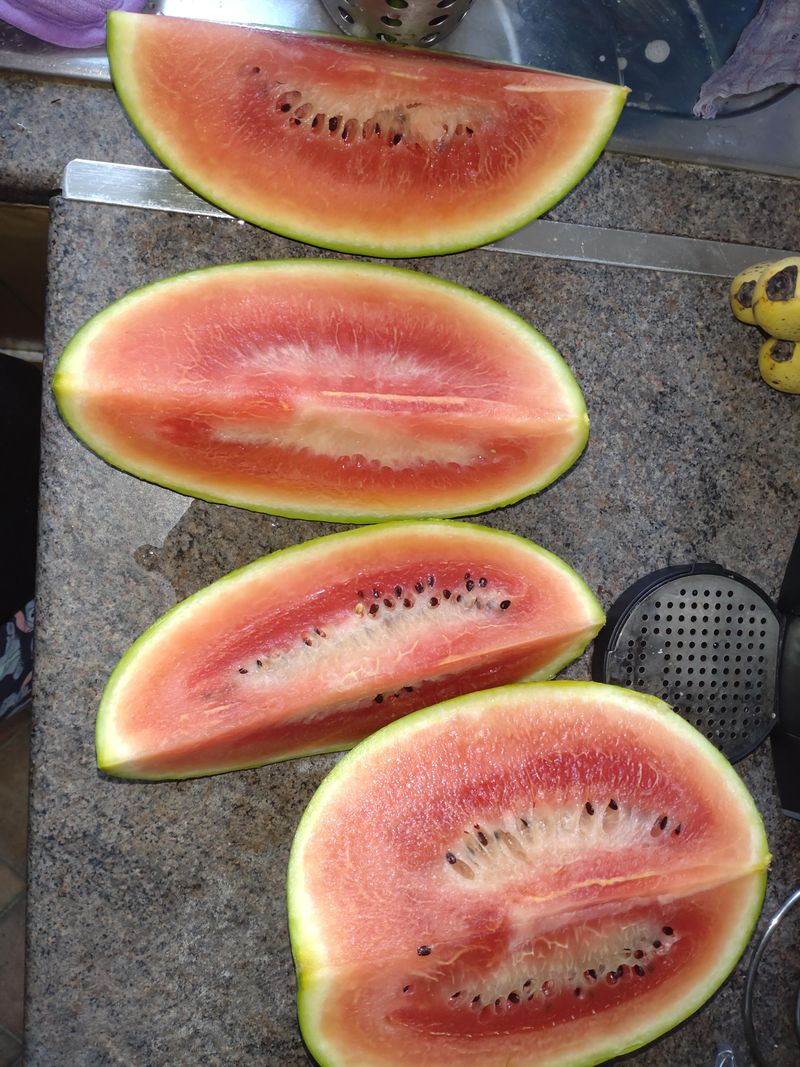
A vibrant red hue is the hallmark of a fresh watermelon. If the color is unusually dark, dull, or shows strange discoloration like brown or white patches, it might be past its prime.
These unusual colors can indicate the breakdown of natural compounds, signaling spoilage. This visual clue is often accompanied by a decline in taste and texture, making the fruit unappealing.
While a perfectly ripe watermelon can be a feast for the eyes, any color deviations should raise concerns. Always trust your senses when it comes to spotting spoilage.
5. It’s Too Mushy or Grainy
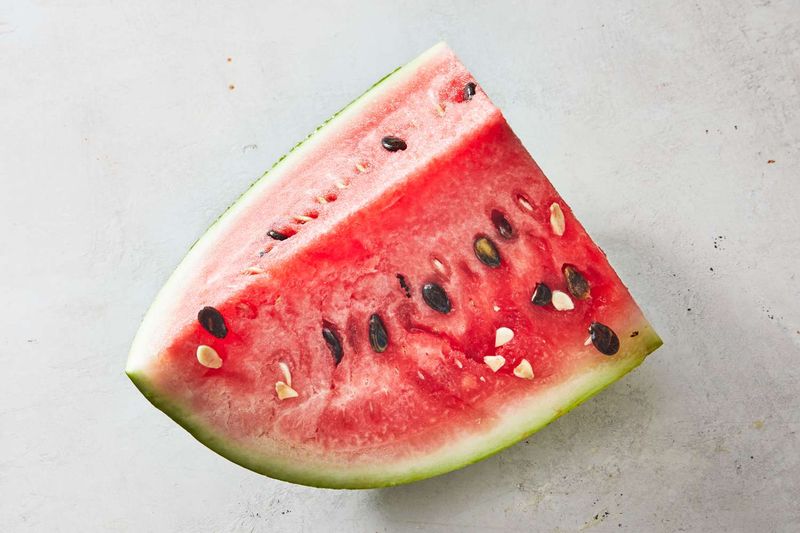
Watermelon should be the epitome of crisp and juicy. When it becomes mushy, mealy, or grainy, it has likely spoiled. This texture change is an indication that the fruit’s cell structure has broken down.
As the watermelon degrades, the once-refreshing crunch turns into an unpleasant softness. The grainy texture further indicates that it’s time to part ways.
Rather than enjoying a refreshing bite, you’d be left with a mouthful of disappointment. Trust your tactile senses to guide you in identifying this unfortunate transformation.
6. You Hear a Hollow Sound
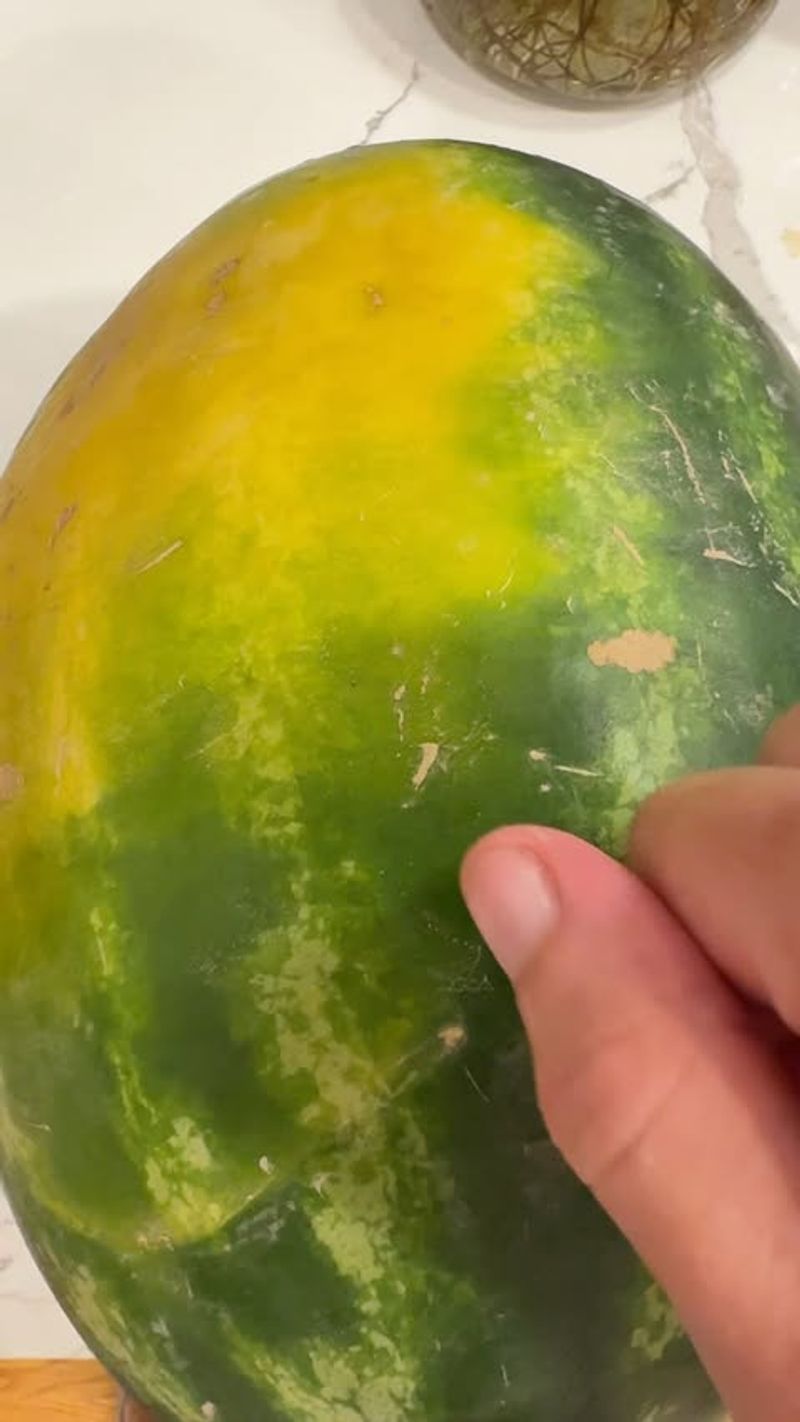
Thumping a watermelon is more than just a quirky ritual. A hollow sound might mean it’s overripe or spoiled inside. This auditory clue can be a trustworthy indicator of the fruit’s condition.
An ideal watermelon gives a solid, resonant sound when tapped. If it sounds dull or hollow, that’s a sign that it’s past its peak.
This method has been trusted by farmers and fruit enthusiasts alike. It’s a simple yet effective way to gauge freshness without cutting into the fruit. Embrace this age-old technique to ensure quality.
7. The Rind Is Shriveled or Leaky
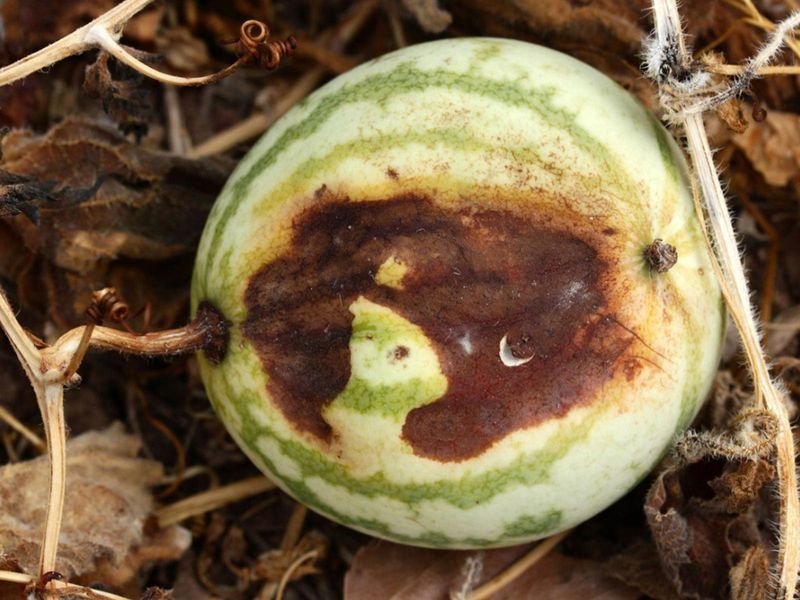
A watermelon with a shriveled rind or leaking juice is a sure sign of trouble. The once-firm exterior now feels soft, and the moisture escaping indicates internal decay.
This visual cue reveals the fruit’s internal struggles, as it’s likely rotting from the inside. While the exterior might give away the secret, the inside is where the real story unfolds.
If your watermelon shows these signs, it’s a clear message to toss it out. The integrity of the fruit is compromised, making it unsuitable for consumption.
8. It’s Been in the Fridge for Over a Week (Cut)
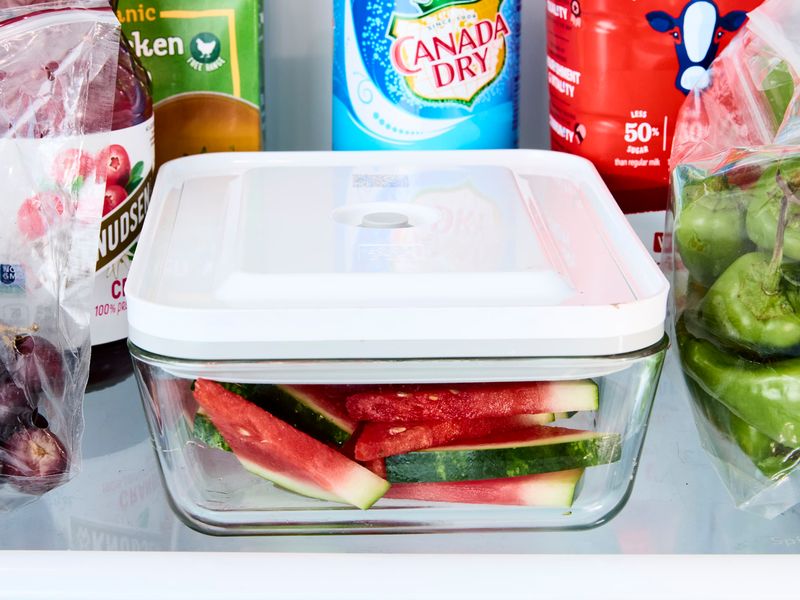
Time is not always a friend to cut watermelon. If it’s been sitting in the fridge for over a week, even if it looks okay, bacteria could be growing. This invisible threat poses a risk to your health.
Cut watermelon typically lasts 3–5 days in the fridge, maintaining its freshness and safety. Beyond this time frame, the risk of bacterial growth increases.
As tempting as it might be to push the boundaries, when in doubt, it’s best to discard it. Safety should always come first when dealing with perishable items.
